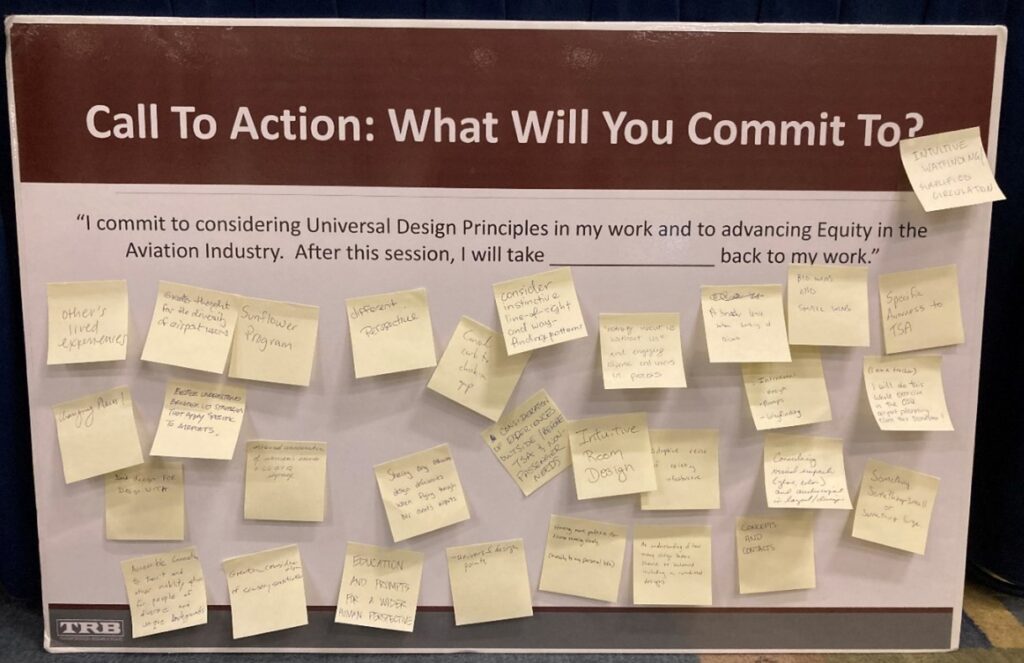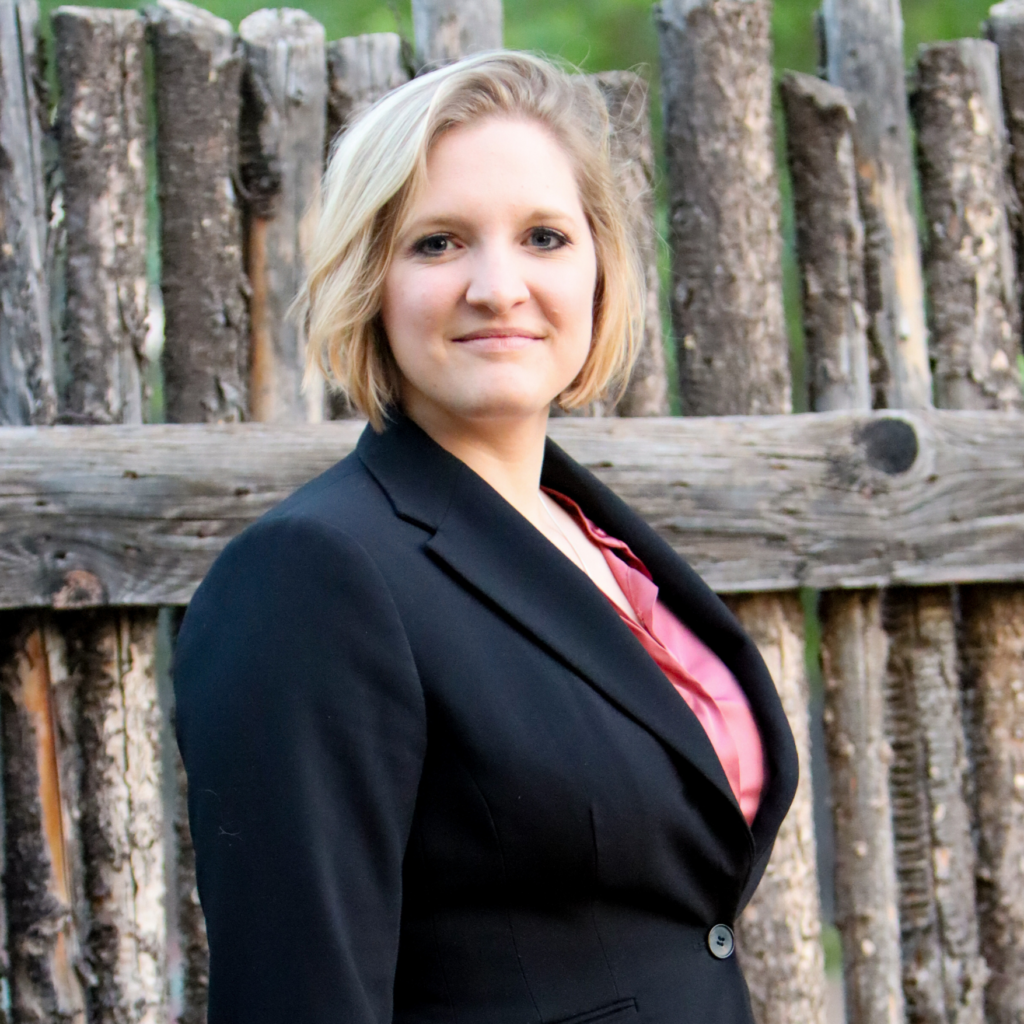Reimagining Universal Design for Airports
By, Mia Held, ENV SP
What would an airport look like that was a welcoming place for everyone and that considered everyone’s needs? How would physical design, planning, and policy change?

An airport is Designed for the “Universal Experience”, but who is the “Universal Person”? Universal Design is frequently defined as an approach that aims to make environments useable for all people. At their core, airports need to be universal and to serve all users. However, historically, they are not designed in consideration of everyone. As a neurotypical person (someone who has neurological development or functioning considered to be the norm), I picture myself moving through an airport environment. I move from arrival via ground transportation, through airport ticketing, luggage check, security, the walk through the terminal, the boarding process, and take-off. As I possess a neurotypical brain, I experience the airport system as it was intended. Generally, an airport is a neurotypical space, designed for neurotypical people. Legacy design practices are based overwhelmingly on standard data and assumptions. Neurotypical, not neurodiverse, is the standard. This leaves those with thought patterns other than this standard—those with Attention Deficit Hyperactivity Disorder (ADHD), Autism, Dyslexia and beyond— left behind before their airline ticket is even booked. This is true for various identities whether race, gender, age, religious beliefs, sexual orientation or any of the various intersectional layers that make a person who they are.
At the 103rd Transportation Research Board (TRB) Annual Meeting in Washington DC, I was proud to lead a workshop session titled, “Making Space for All: Reimagining Universal Design for Airports.” This workshop utilized the principles behind feminist data theory and urban design to explore the experiences of neurodiverse people, women, trans folx, gender non-conforming individuals, and other marginalized groups as they interact with the airport system. The session invited participants to apply lessons from feminist data theory and universal design to explore the question: What could a more equitable airport design look like?
Each session speaker provided their perspectives on the application of universal design and equity practices at airports. The bulk of the session was a workshop applying universal design principles to a fictional airport environment. Participants were tasked with thinking through the airport environment when viewed through several intersectional lenses, rather than a single identity. For example, instead of thinking about how a neurodiverse person might encounter the airport environment, participants considered how a person with layered identity might experience their travel journey. People are not just one thing, as our layers of identity are inextricably linked to who we are.
Some key workshop questions discussed included:
- What considerations need to be made for escalators, stairs, and elevators to maximize mobility?
- How are curb cuts and zero curblines used to maximize landside accessibility?
- What amount of circulation space within the airport environment is sufficient for all users?
- What airport policies need to be adjusted to plan for “invisible differences”?
- How can universal restrooms be outfitted to accommodate the needs of everyone?
- What does a “universal airport” mean for staff and employee training?
- How does religion impact interaction with the airport environment?
- In what ways are airports gendered?
- In a globalized world, how can wayfinding be made universal?
- How can airports welcome service and emotional support animals?
How Much Better Would Our World Be If It Was “Nothing About Us, Without Us”?

As airport planners we know that our role is to center the agency of users in the planning process. This workshop served as an interactive and creative exercise to begin exploring the experiences of all users. In bringing workshop takeaways back to their airports and companies, participants were implored to remember that truly equitable work is “nothing about us, without us,” centering those who are impacted in decision-making processes. We can never truly know the lived experience of someone different from us, so we must ensure all voices have a seat at the table in the planning process. Workshop participants were asked to commit to “considering Universal Design Principles in their work and to advancing Equity in the Aviation Industry.” Participant workshop takeaways were captured in sticky notes.
A Call to Action: We Shape Our Buildings and Thereafter, They Shape Us
As designers, engineers, and planners of the built environment, we have the power to make meaningful change today. This is our superpower. We all have the power to make airports more accessible for all users. Are you up for the challenge?
_____________________________________________________________________________________
Thank you!
A sincere “thank you” to the incomparable workshop planning committee and our expert workshop speakers. In addition to myself, session panelists included Michelle Sandoval, Casey Ries, Michael Perry, AIA, DIAD, Jennie Santoro, AIA, NCARB, and Dr. Katharine Hunter-Zaworski. Thank you too to our participants for being engaged and committing to implementing the social piece of sustainability- equitable design principles in your own work!
Thank you to the Committee Sponsors for this 2024 Annual Meeting Session:
TRB Young Members Council- Aviation (YMC-A)
Aviation Group (AV000)
Standing Committee on Accessible Transportation and Mobility (AME50)
Standing Committee on Passenger Intermodal Facilities (AP045)
Standing Committee on Environmental Issues in Aviation (AV030)
Standing Committee on Airport Terminals and Ground Access (AV050)
The C&S Companies team can support you via an interdisciplinary team of planners and engineers with experience in incorporating equity principles in all phases of planning, design, and construction. Contact me to learn more about how we can help.

Mia Held, ENV SP, Senior Consultant, Aviation Planning & Sustainability